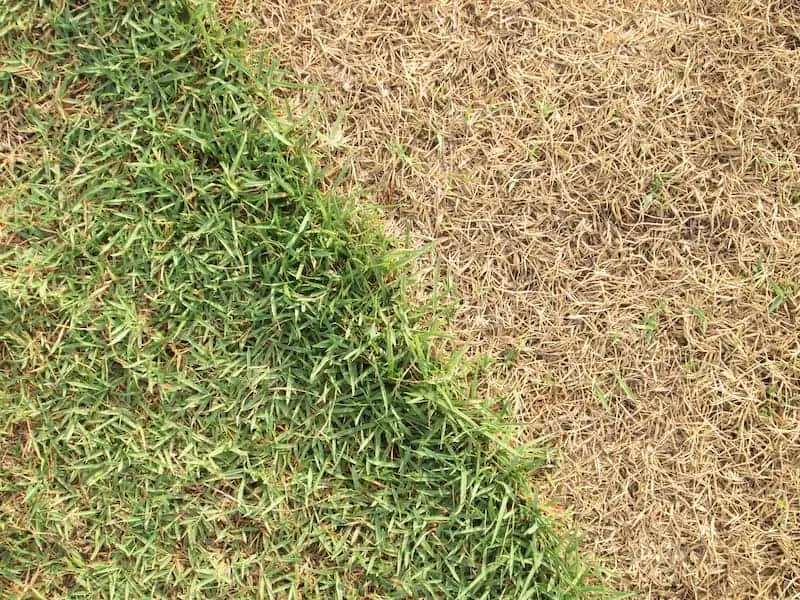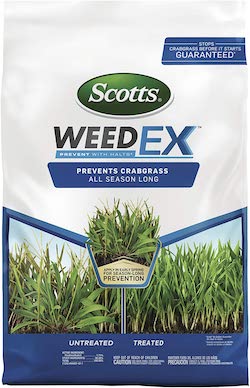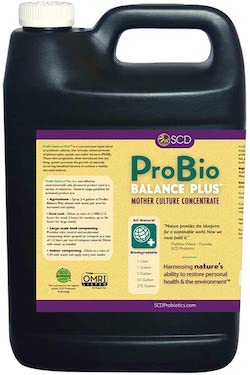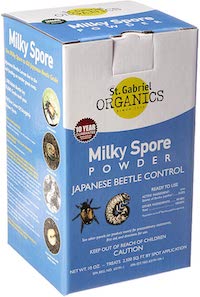What to Do About Grass That Keeps Dying
Most property owners have a common problem: their grass keeps dying. Dead grass turns brown and can often lead to bare patches in your yard. Usually, these issues can be prevented, but if you’re already experiencing dead grass, what do you do?
Common questions property owners have are why their grass is dying and what can they do about it? Brown grass isn’t as attractive as a lush, green lawn that can leave onlookers jealous. Is dying grass something that you can prevent?
So, why does my grass keep dying? There can be various factors that lead to your grass dying. There are many reasons your grass may be dying off from drought or heat to weeds or disease. Grass turns brown due to its roots no longer being able to get nutrients or water from the soil. This can result from the roots not functioning correctly or the ground not containing enough water or food for your grass.
Keep reading for an in-depth list of reasons why your grass keeps dying (and how you can fix the problem)!
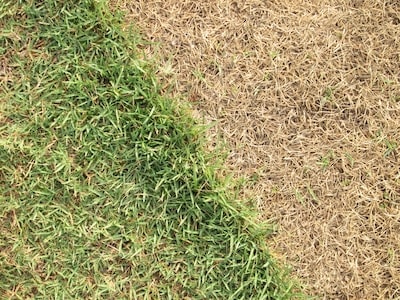
Heat or Drought
If there are periods of high heat or low amounts of water, many grass types often become dormant. Grass going dormant is normal, and nothing to necessarily be too concerned about. Grass will naturally recover from temperature drops and when it rains again.
You can tell if drought is causing your grass to prematurely die by looking for early signs, including folded tree leaves that drop too early. If you see leaves that are folded up and have prematurely fallen from your tree, then you should be wary of your yard going through a drought.
If your yard shows signs of drought, you can help sustain your dormant lawn by applying half an inch every two to three weeks. To get your yard green again, water it with an inch of water every six or seven days. You can also wait until the temperature drops and rain resumes.
You mustn’t water your yard during the hottest parts of the day, especially around noon. It’s best to water your lawn in times of drought in the evening or early morning, so you don’t scorch your grass even further.
You can also use your sprinkler system to water your yard during a drought or high heat temperatures. It’s suggested that your leave adjust your sprinklers to water your yard for about two hours at a time. Your sprinklers may not reach all areas of your yard, so ensure that they are adjusted to reach as much of your grass as possible. Most sprinklers can be easily adjusted.
If you’re unable to water early in the day, you can utilize a timed sprinkler system that attaches to your hose.
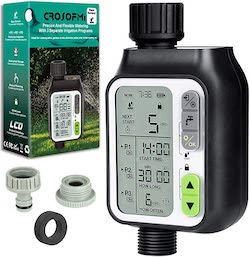
 Weeds
Weeds
Common weeds can also choke out your preferred grass and leave you with patchy areas in your yard. These pesky plants will absorb the much-needed water and food meant for the grass in your yard. Taking control of unwanted weeds can be extremely difficult, but not impossible. You can apply a pre-emergent herbicide in the spring that can help to prevent weeds from germinating. You can also leave your yard in the hands of professional lawn care providers that can create annual maintenance and treatment plans.
The best way to rid yourself of weeds is to ensure that your yard is a place where it’s difficult for them to mature and thrive. When your grass is short, your soil is compacted, and your turf is deprived of water, you’re encouraging weeds to grow! You can prevent these problematic plants by maintaining a healthy lawn.
To kill weeds without harming your grass, you can use pre-emergent and post-emergent herbicides. Post-emergent herbicides work best against dandelions and shouldn’t hurt your lawn. Pre-emergent herbicides typically are used to prevent crabgrass from growing.
 Overcoming Pesky Weed Infestations
Overcoming Pesky Weed Infestations
If weeds are starting to overcome your yard, here are a few steps to follow:
- Identify what weeds you are dealing with. Some of the most common weeds include quackgrass, crabgrass, and other invasive species. Certain treatments are made to target specific weeds. Once you know what weeds you are treating, you’ll be able to make a more educated purchase when buying lawn care products like herbicides.
- When you chose a treatment, you’ll also want to consider the weed stage. If you target weeds before the growing season in spring, you’ll want to purchase a pre-emergent herbicide. For weeds that are already present, you’ll want to buy a post-emergent herbicide.
- Carefully follow the instructions for how much product to use and when to apply it. Read the labels before you start applying them to ensure you use the product correctly.
- After you’ve treated the weeds, ensure that you maintain a proper lawn maintenance schedule to help keep your grass free of weeds.
- Seed your lawn and aerate it if needed in the fall.
- Before winter, give your grass one last short mow and treat it with fertilizer.
- In the spring, use a pre-emergent herbicide. Pick any noticeable weeds by hand.
- Consistently weed your lawn regularly in the spring and summer. Be careful that you don’t remove more than a third of the grass at a time.
If you want to try a natural way of getting rid of weeds, you can also spray vinegar directly onto them. It will dry out the plant leaves and kill what’s above the ground. You can find vinegar at your local home improvement store.
Vinegar sold at home improvement stores often has a higher percentage of acetic acid. You can use this to kill a weeds’ top growth. This method works best for spot treatments. If you have a larger area to treat, a herbicide is more effective.
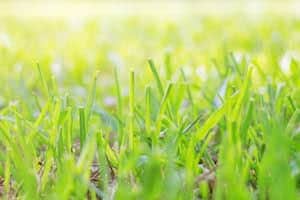
Disease
Just like any living thing, your yard can be susceptible to getting diseases or fungal infestations. These can turn your lawn brown and lead to your grass dying. If you find signs of illness or fungi, you should treat it immediately. Symptoms include white, brown, or black substances.
If you believe that your turf is diseased, you can contact a lawn care specialist to ensure that your lawn gets the proper care. You’ll want to water your property in the early morning, mow regularly, aerate your yard, and manage thatch. This will help to ensure that your lawn is healthy and less likely to become diseased. Here are some great tips for recognizing and treating lawn fungus.
Compacted Soil
The soil of your lawn is one of the essential parts of growing grass. If your property is brown, diseased, or dying, then your soil is most likely not correctly in balance. You can have your soil tested to see what is lacking. Often, when soil is compacted, it lacks the proper microbes and organic matter. Even if there are nutrients present, they may not be able to pass through the ground if it’s compacted.
 Insect Pests
Insect Pests
Any yard has insects–they’re part of any grassy area. However, there are sometimes unwanted bugs that can harm your grass. For instance, cinch bugs drain plant juices. If you have a cinch bug infestation, your grass may first look wilted, then yellow, and eventually, it will turn brown. If you look at a wilted patch of grass and find small black, brown, orange, or red bugs with white markings, then you’ve got a cinch bug problem. To prevent something like cinch bug issues, you can remove thatch and keep your yard consistently moist.
Other bugs that may cause you issues include grubs. Beetles lay their eggs in the ground, which grow into larvae (grubs) that eat your grass’ roots. Signs of this happening will mimic high heat issues like drought. You can use a shovel to peel back a square foot patch of turf to investigate. If you see more than ten grubs per square foot, then you may have a grub infestation.
To treat your lawn for pests like grubs, you should let your yard dry out thoroughly before you water it again. You can also plant low-maintenance turf grass that is tolerant against grubs. You can also try treating your grass with milky spore powder, which naturally controls grubs.
 Pet Waste
Pet Waste
If you have a family pet that frequently urinates or poops in your yard, then you may notice the areas that your pet frequents become brown or patchy. Urine contains acid and can often lead to bald or discolored areas of your lawn. If you know an area of your yard is your pet’s favorite, you can flush it out with water to help dilute their urine.
Prevention vs. Intervention
The best way to care for your grass and property is to prevent issues before they appear. You can help to prevent your grass from dying by aerating and adding seed to your existing grass in the fall; fertilizing in the fall and spring; watering in the early morning; raising the mowing level to three inches or higher in the summer; and, performing soil tests to determine what nutrients your yard may need.
A beautiful, lush lawn may be a challenge to maintain but it is well worth the effort. If you notice that your grass continues to die after preventative measures, you may need to consider improved drainage measures. Many Tulsa construction companies offer services such as these to help you achieve the yard and lawn of your dreams!

